|
|
Russia begins reviving its early-warning satellite system On Nov. 17, 2015, Russia's military launched its new-generation Tundra satellite designed to restore Moscow's capability to detect, track and identify worldwide missile launches from space. The new orbiting constellation will be the first line of defense in a two-layered virtual barrier around Russian borders intended to warn the nation about an impending missile attack. Known as EKS for Integrated Space System, the network also includes ground-based radar installations across Russia and a control center. Written and illustrated by Anatoly Zak; Editor: Alain Chabot
|
|
|||||||
| TECHNOLOGY | |||||||||
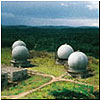 |
The EKS constellation
The EKS network was designed to replace the Soviet-era early warning systems inherited by Russia in the 1990s. Along with new ground-based radar stations, the new satellites could fill potential gaps in the Russian early warning defenses left by the disintegration of the USSR. |
||||||||
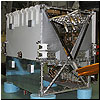 |
Yamal satellite series
Satellites in the EKS constellation derived from the Yamal spacecraft, RKK Energia's first foray into the field of satellite communications in nearly three decades. Ironically, it was the same company that had pioneered the development of communications satellites in the USSR. |
||||||||
 |
Tundra satellite design
The overall development of the EKS constellation was led by TsNII Kometa in Moscow, while RKK Energia built the 14F142 spacecraft, a.k.a Tundra. TsNII Kometa also supervised the development of the main infrared telescope designed to detect heat signatures left by missiles. |
||||||||
| DEVELOPMENT | |||||||||
 |
Pace of our development depends primarily on the level of support from our readers! |
||||||||
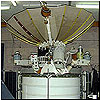 |
Before Tundra there was Oko
During the Cold War, the USSR fielded its first-generation early warning system US-K, which included Oko satellites. The second-generation constellation, US-KMO entered testing during the post-Soviet period, however it had spotty coverage and its operation turned out to be short-lived. |
||||||||
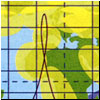 |
Nord: Connecting the north
Creators of the EKS system realized that the constellation's highly elliptical orbits could also be used for communications. NPO Lavochkin formulated the civilian application of the system within the Nord project. |
||||||||
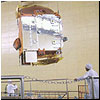 |
Development of the Tundra satellite
The new early warning constellation planned for deployment by 2005, promised wider coverage and more accurate tracking of missiles, however its development bogged down in organizational and technical problems, pushing it at least a decade behind schedule. |
||||||||
| DEPLOYMENT | |||||||||
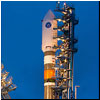 |
Launch of the first EKS (Tundra) satellite The deployment of the EKS system started on Nov. 17, 2015, at 09:33:41 Moscow Time, with the launch of an experimental Tundra satellite from Plesetsk on a Soyuz-2-1b (14A14-1b) rocket with a Fregat upper stage. The Kosmos-2510 spacecraft was deployed in a highly elliptical orbit, which takes 12 hours to complete. |
||||||||
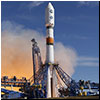 |
Second EKS satellite enters orbit The second EKS/Tundra satellite lifted off from Plesetsk on a Soyuz-2-1b (14A14-1b) rocket with a Fregat-M upper stage on May 25, 2017, at 09:34 Moscow Time (01:34 EDT). Upon reaching its nominal orbit, the spacecraft was officially identified as Kosmos-2518. |
||||||||
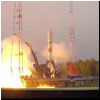 |
Third EKS (Tundra) satellite flies Military personnel at Plesetsk Cosmodrome in Northern Russia performed the successful launch of a Soyuz-2-1b rocket on September 26, 2019, carrying a classified payload which is believed to be the third satellite for the nation's newest constellation designed to provide the Kremlin with early warning about launches of ballistic missiles around the world. |
||||||||
 |
Russia to orbit missile-watching satellite Military personnel at Plesetsk Cosmodrome in Northern Russia prepares to launch a Soyuz-2 rocket on May 21, 2020, carrying a classified payload which is believed to be the fourth satellite for the nation's newest constellation designed to provide the Kremlin with early warning about launches of ballistic missiles around the world. |
||||||||